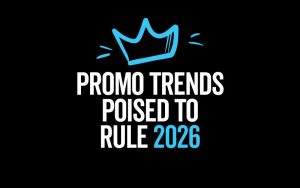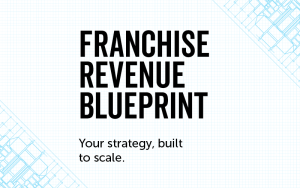[Updated for 2024]
As each social media platform evolves, it attracts its own set of dedicated followers and fosters a unique community of content. Managing a content strategy for these various platforms can become overwhelming, fast. It’s a challenge to craft different posts and images for each social media platform, since what works on one will not always translate easily to the next.
Every channel has its own unique demographics, algorithms, style, ad types, and hashtags. Since each also reaches a different audience in a different way, it’s important to understand how to customize content to connect well with the audience on each channel.
Why Do I Need to Customize My Social Media Content?
There are two main benefits to customizing your content for each social media platform. First, content tailored to each platform will be as organic as possible with its message. Second, your clients and their clients will be thrilled with the level of customization. It will ultimately deliver the content users are seeking, and in turn create more conversions and sales. If you’re just blasting out the same message to every platform, you’re missing special community nuances and the chance to resonate deeply with each group.
Ponder this:
- As of May 2024, the world population is 8.10 billion. Facebook currently has about three billion users as of October 2023. That number is approaching half the people on the planet.
- Sixty percent of the global population uses social media.
- More than ninety-two percent of U.S. marketers with more than 100 employees are expected to use social media to promote their brand.
- 73% of Americans are active on social media.
It’s clear that you’ll find enormous, engaged audiences on social platforms. So how do you start?
Types of Content For Each Social Media Platform
It’s important to truly understand the communities of Facebook, YouTube, Instagram, TikTok, X, Pinterest, LinkedIn, and more. As you craft your social media strategy, consider each platform individually and create posts and imagery that align with each. Although they constantly evolve, the most popular platforms each have their own core aesthetic and personality:
With approximately three billion active monthly users, Facebook is still the most popular social network, even though the younger demographics have migrated to platforms like Instagram and TikTok. Facebook users seek both value and entertainment. They are in a friends-and-family mindset when viewing your content, so they’re open-minded and consumer-based. You have the space to provide a longer-format backstory to your posts in this venue, and videos perform best on Facebook — especially the ones that make people laugh. User-Generated Content (UGC) also performs well on Facebook and lends your brand authenticity and credibility, helping it stand out amongst the competition.
We recommend using Facebook ads; they’re the most effective for conversions since the News Feed has been suppressing business posts. You can also harness organic tactics, using Facebook groups to foster community, Messenger chatbots to create a personalized customer experience, or live video to engage followers.
YouTube
The second largest social media platform, with about 2.5 billion monthly active users, YouTube still leads the pack in the format it invented —a video content repository that engages users with various channels of user-generated videos. Since about 81% of U.S. adults use YouTube, it has incredible reach. The longer format videos allow brands to create strong loyalty and engagement with their followers. The quicker YouTube Shorts are YouTube’s answer to TikTok’s videos, and they enable fast visual storytelling that can reach greater audiences. We recommend brands looking to leverage the power of video consider YouTube advertising.
Clocking in at around 2 billion monthly active users, Instagram is the third largest platform. It is a visual network that relies on the power of storytelling. Sixty-eight percent of users are under 35, so Instagram has a large amount of the younger demographics. The platform has evolved to rival TikTok’s video offerings, which capture younger audiences and boost engagement.
If you’re planning to advertise on Instagram, your posts should contain quality images that are related to your brand and build a consistent tone and visual personality. You can also consider partnering with a creator who has already cultivated a following on the platform. Stories are a popular ad format, as are vertical-video Reels. The shoppable posts introduced in 2018 have also proven highly successful for brands. Through Instagram, brands can reach an enormous audience and move followers along the buyer’s journey from shopping to purchase by linking product information and facilitating sales within the platform.
Start posting Instagram Reels if you haven’t already. Short-form video continues to be the fastest growing marketing trend and the number one format marketers are using, according to Hubspot’s State of Marketing in 2024. Reels should be funny, engaging, informative, and interactive to perform best across audiences.
Related: The Art of Creating Compelling Short Form Video Content.
TikTok
With 1.2 billion monthly active users, and a swarm of media attention, TikTok has taken the digital marketing world by storm. It is the self-proclaimed “leading destination for short-form mobile video.” TikTok’s growth has been phenomenal —it was the fastest growing app worldwide after just one year on the market, and it’s extremely popular among Generation Z, with about eighteen percent of users falling in the 12-17-year-old age range. TikTokers spend more time on the app than any other user base, at 54 minutes a day. YouTube is next at 48.7 minutes.
Due to this popularity, 53 percent of brands plan to increase their investment in TikTok. They’ve taken note of the platform’s extremely engaging content and high number of conversions. There are a number of different TikTok ads available, including Spark Ads, Carousel Ads, and Shopping Ads. Influencers are king here too, so consider a collaboration to build your brand. When creating short-form video content for TikTok, popular formats include unboxings, reviews, tutorials, behind-the-scenes, your product in action, viral challenges, or testing out “hacks.” You can experiment to see which works best for your brand!
Related: How to Run an Influencer Campaign
X/Twitter
With 541 million monthly active users, X (formerly Twitter) has a strong following. Most people use X as a quick way to learn about what is going on right now. They want fast tips, news, and interesting articles. Therefore, industries like sports, politics, entertainment, tech, and marketing find engaged audiences on this platform. X provides an interface for brands to build their voice. It’s enough space to connect with followers by dialoguing with them, adding value, sharing brand content and retweeting other content, and keeping a finger on the pulse of the industry.
Different from all other platforms, text-based posts on X perform better than images or videos. Tweets with links get retweeted 86% more often. Diving even deeper, on average, tweets that linked to how-to or list-based articles received three times more retweets than any other type of text-based content. X is valuable for building your brand. It can help your customer service team answer questions about the services and goods your company provides. This requires regularly checking to see if anyone mentions you or replies to your tweets.
Checking in with 465 million monthly active users, Pinterest is a behemoth in the space it created. Creative people love Pinterest, which is why it’s important to create posts that offer great images and instructions. Build boards that center around some of the core topics associated with your company. Expand on these as you find more topics your consumers may be interested in. Pinterest offers strong opportunities to partner with other aligning companies to create boards that complement each business. Be aware that the expectation is that pins are original content; content that looks like it has been repurposed does not perform as well.
Pinterest is a great platform for conversions because users are often creating boards for home improvement, fashion, travel, or other aspirational topics, and the ease of purchasing the look of the board makes it simple to generate conversions. If you’re targeting women, Pinterest is a good fit, since 60% of Pinterest users are women. Men are catching up, as their numbers are up 40% year-over-year (Gen Z also follows this trend).
About 350 million monthly active users depend on LinkedIn for their professional social network. It’s no surprise that LinkedIn is focused on business, but the use of this platform to target professionals has become second to none. With more than 180 million users in senior roles, 63 million decision-makers, and 10 million C-level executives, it’s the go-to for reaching B2B brands who can sell your product, partner with you, or hire your company. Additionally, 65 million people utilize LinkedIn each week for their job search, making it an excellent channel to promote your products and services.
On this platform, you can create content unique to a certain sub-field of your industry and target just them, if you choose. People on LinkedIn are in a business or job-searching mindset, so keep it professional. Educational articles go a long way in generating engagement, and video how-tos have proven successful. Sharing articles in industry groups is a great way to get your content noticed if you’re targeting a certain industry.
Related: Your Guide to Repurposing Content.
Connect by Customizing Content
While managing social media accounts for your business can seem like a daunting task, if you approach it by customizing content to what each platform does best, it becomes much more streamlined. By tapping the unique demographics, content, and zeitgeist of Facebook, YouTube, Instagram, X, TikTok, Pinterest, and LinkedIn, you’ll be able to connect directly with your audiences on these platforms. If you are seeking more effective strategies to optimize your social media marketing plan, Ironmark can help you increase your engagement and impact. Our team stays on top of the constant changes and trends; we can help you connect by customizing your content and simplifying the entire process. Let’s get started!



